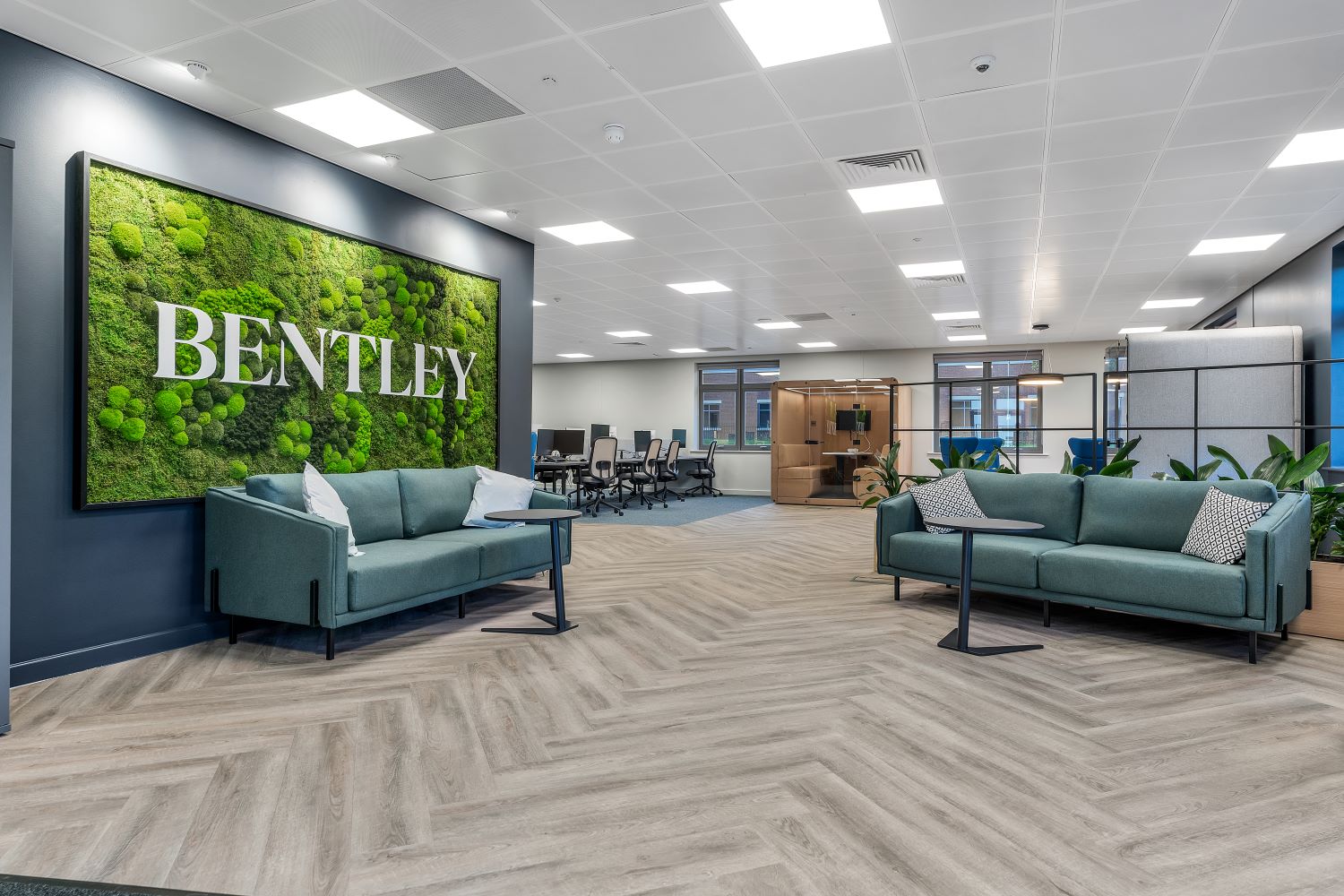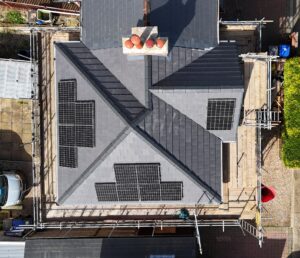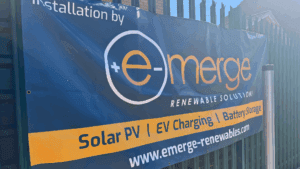We hear the phrase ‘net zero’ on an almost daily basis but do you know what it actually means and how it might affect your business?
The UK government committed itself to a 100% reduction in greenhouse gas emissions by 2050, relative to 1990 levels. This was done via the Climate Change Act (2050 Target Amendment) Order 2019 and is known as the ‘net zero target’. It is a legally binding target.
Net zero will happen when the amount of carbon we add to the atmosphere is no more than the amount removed. Although carbon dioxide is not the only greenhouse gas, it is the most significant, hence the term ‘carbon emissions’. 2050 is considered the first realistic date for balancing net zero with economic growth.
After surface transport, the built environment is the UK’s largest source of climate emissions, accounting for 25% of UK emissions arising from a combination of operational emissions – the energy needed to heat, cool and power buildings – and embodied emissions, those associated with the extraction and production of materials and the construction, maintenance, and demolition of buildings and infrastructure.
Decarbonising new buildings
The Future Homes and Buildings Standard (FHBS) sets out the government’s mandatory standards for the decarbonisation of new buildings in England from 2027.
It encompasses two standards: the Future Homes Standard (FHS) for dwellings and the Future Buildings Standard (FBS) for commercial buildings. Legislation is expected in December 2025, to come into effect a year later, with a transitional period running to December 2027.
The FHBS will impact everyone involved in creating new buildings: from investors and funders, developers and designers, consultants and engineers, to sub-contractors and surveyors, manufacturers and suppliers of construction materials, building control bodies and occupiers. Architects will need to integrate energy modelling into their designs, working with energy consultants and sustainability experts to navigate the new standards.
The Standard aims to create carbon-neutral buildings, although it does not address embodied emissions. Key features include improved building fabric efficiency, ventilation and indoor air quality and low carbon heating systems.
The Standard focuses on reducing operational carbon by improving the thermal efficiency of the building’s fabric through enhanced levels of insulation in walls, roofs, and floors; high-performance windows and doors; and minimised thermal bridging to prevent heat loss at weak points where conductive materials penetrate insulation.
Increased airtightness of buildings will reduce heat loss but necessitate mechanical ventilation systems and standards to maintain healthy indoor air. Smart ventilation controls will balance air quality and energy use and more stringent Part L Building Regulations will be necessary as the electricity grid decarbonises, to ensure that no further work will be needed for new buildings to meet net zero.
Recognising that heating and hot water demand is a massive source of carbon emissions, the FHBS will ban gas boilers, gas water heaters and fossil fuel heating in favour of low-carbon heating systems such as air or ground source heat pumps and electric heating systems with smart controls.
Decarbonising existing buildings
80% of today’s buildings will still be around in 2050, so decarbonising existing stock is an equally, if not more, important step towards achieving net zero but it presents greater challenges than new builds. Currently, the UK employs a combination of mandatory and incentivising measures.
District heat networks
Energy-efficient buildings will be supported by the expansion of district heat networks, especially in dense urban areas. These networks connect multiple buildings to a single, low-carbon heat source. Heat networks are not yet mandatory or regulated in the UK but they are being phased in.
Following the heat networking zoning consultation, some commercial buildings may be required to connect to a heat network, unless they qualify for an exemption. A mandatory connection will require investment in infrastructure and retrofitting existing systems and is likely to affect many owners and occupiers of buildings in large towns and cities.
EPCs and MEES improvements
The FHBS will also introduce more rigorous methods for assessing energy performance, including updated Standard Assessment Procedure (SAP) calculations and TM54 assessments to predict operational energy use.
Last year the government consulted on amendments to make Energy Performance Certificates (EPCs) more accurate and up-to-date by reducing their validity period from the current 10 years, with options ranging from just two years to seven years to ensure that certificates provide more current information and better reflect building improvements. However, greater assessment accuracy may result in lowered ratings for some buildings if the previous assessment inaccurately overestimated the building’s performance.
The consultation stopped short of addressing the contentious Minimum Energy Efficiency Standards (MEES) and the government has paused proposed legislation mandating an uplift to EPC C by 2027 and EPC B by 2030. Nevertheless, many investors and funders are already embedding higher energy efficiency requirements into transactions, as valuers start to downgrade properties with an EPC rating of D or below.
As and when the MEES uplift is confirmed, there will be a demand for retrofit services as property owners rush to comply with deadlines. Proactive steps now will help owners avoid demand-pull inflation and/or voids.
Retrofitting
Apart from the above-mentioned requirements, retrofitting of existing buildings is largely voluntary. The benefits are well-known but worth repeating:
- Operational cost savings for occupiers
- Tenant traction and lower void rates
- Increased property values and improved borrowing for owners, and
- Future-proofing against new legislation.
However, capital expenditure is a critical factor and most retrofits require vacant possession or proactive management of existing tenants.
What you can do to prepare for net zero
Whilst at present there are no UK targets to make existing buildings in England net zero, there are a number of schemes encouraging owners and occupiers to take steps in that direction.
- Solar PV panels: any building with a sloped or flat roof can generate solar energy and use the power produced on site in its operations or feed it back into the grid, and yet less than 5% of the UK’s commercial and industrial rooftops are equipped with solar PV panels. Government grants are available to small businesses and homes through the Smart Export Guarantee.
Boiler Upgrade Scheme: the Boiler Upgrade Scheme supports the decarbonisation of small and medium commercial buildings by providing upfront capital grants of up to £7,500 to replace existing fossil fuel heating with more efficient, low carbon heating systems such as heat pumps and biomass boilers.
Other incentives include:
- 100% first-year enhanced capital allowances for energy-efficient equipment, such as electric vehicle
- (EV) charging equipment
- The Workplace Charging Scheme which covers up to 75% of the costs of purchasing and installing EV chargepoints at workplaces (closes 31 March 2026), and
- Green bank loans for retrofitting.
These piecemeal measures can nudge businesses towards net zero but meeting the UK’s 2050 commitments will ultimately require a more holistic government approach, backed by adequate funding.
To find out more information, visit their website.




















